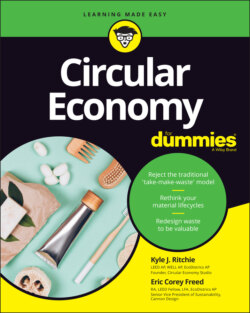Читать книгу Circular Economy For Dummies - Eric Corey Freed - Страница 95
Looking at reuse programs
ОглавлениеMany of the items tossed into the garbage could be utilized by other people. This isn’t a new concept — people have been having lawn sales and garage sales for decades now. With the evolution of Craigslist and Facebook Marketplace, for example, the ability to sell items you no longer have a need for is becoming easier. You no longer have to set up a dozen folding tables out on your front lawn and then paste little round, neon stickers on that creepy porcelain baby doll that your grandmother gave you. You can post your sale online instead, where someone who didn’t have a weird grandma might find it. Aside from online marketplaces, thrift stores provide an excellent setting for gently used items to find new owners, instead of being tossed into the landfill.
Keeping items in use longer is one of the main principles of the circular economy. Finding a new destination for what you might consider a bunch of junk is the right move, no matter how trashy it might be. Aside from household items, one of the next booming industries will be the salvaging and resale of building materials. Entire building certification systems support this diversion of construction and demolition waste already —the United States Green Building Council, for example — but not on a whole-building scale. Check out Chapter 17 for more about building-reuse strategies.
